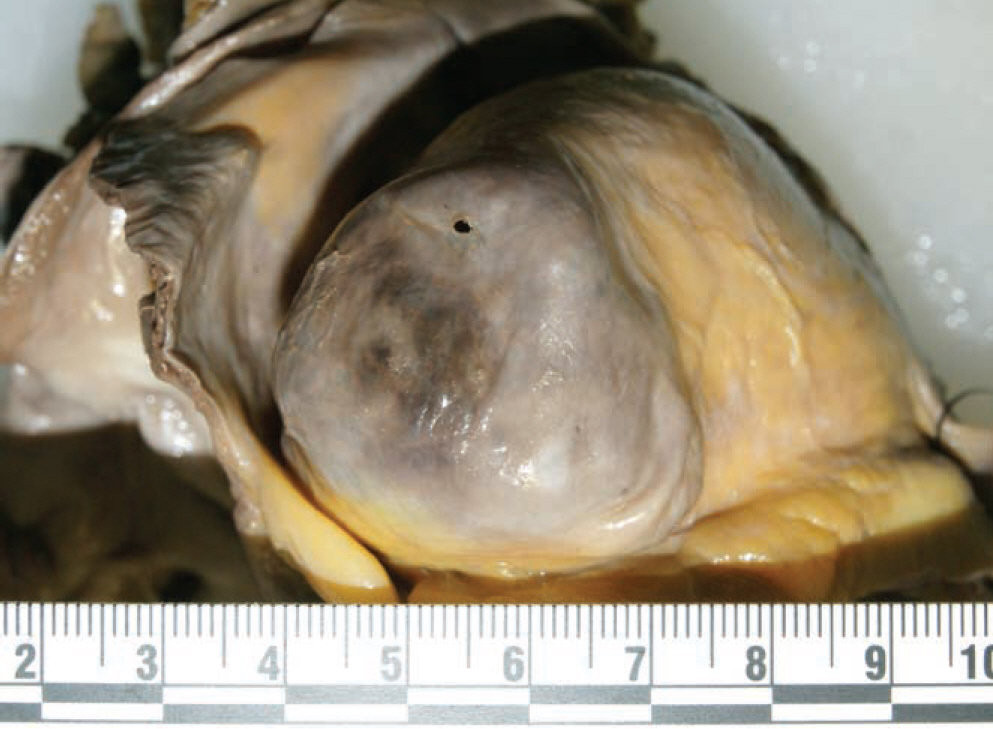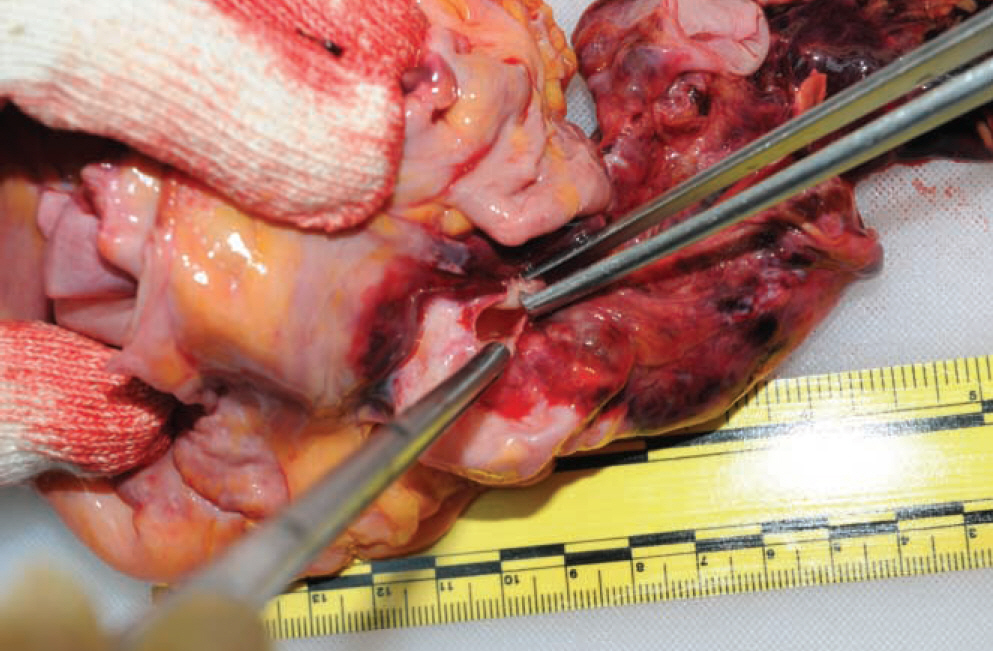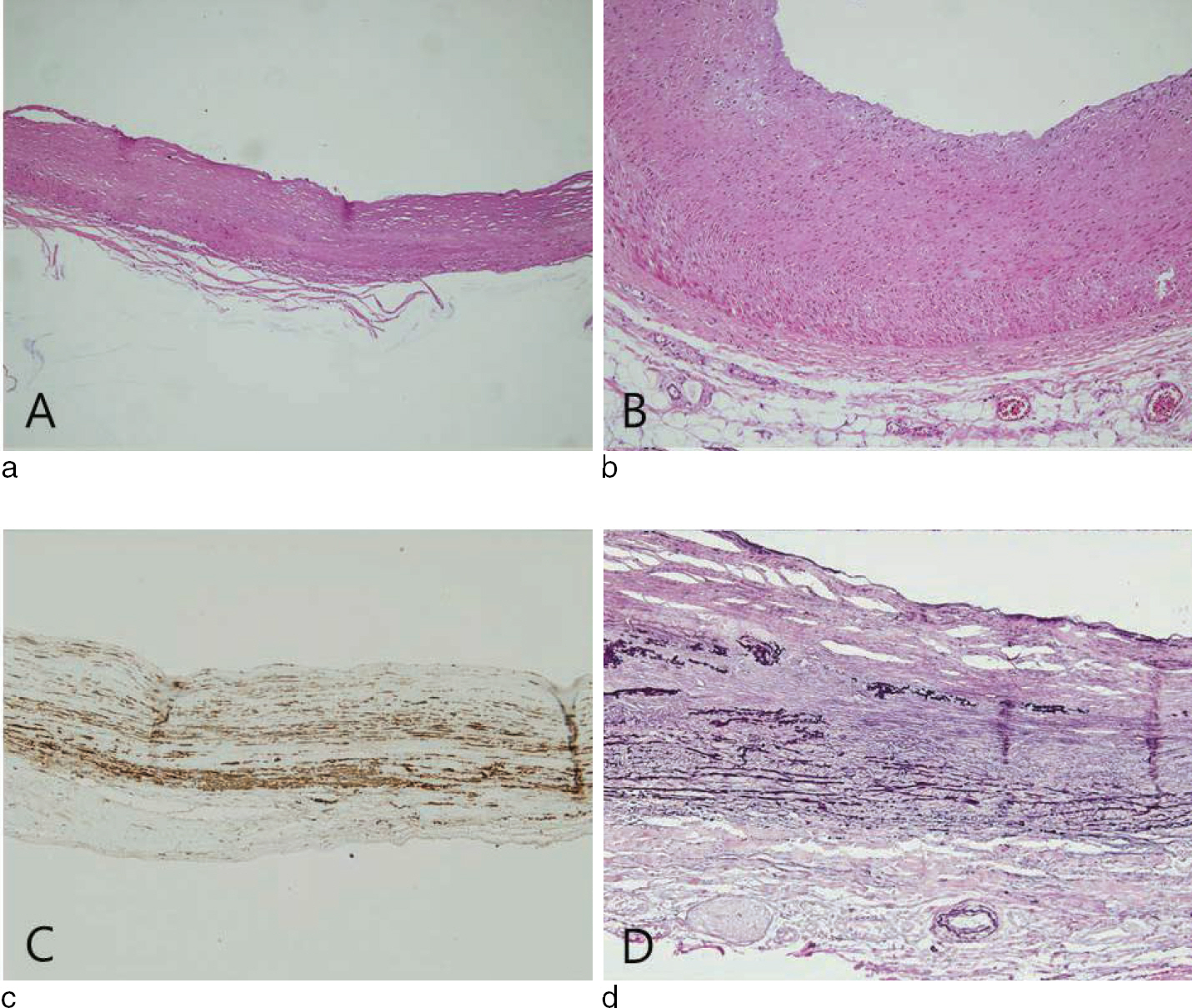Korean J Leg Med.
2013 Aug;37(3):161-166. 10.7580/kjlm.2013.37.3.161.
Rupture of Ascending Thoracic Aortic Aneurysm in Postpartum: 2 Cases Report
- Affiliations
-
- 1Department of Pathology, Pusan National University Hospital, Busan, Korea.
- 2Division of Forensic Medicine, Southern District Office, National Forensic Service, Yangsan-si, Gyeongsangnam, Korea.
- 3Division of Forensic Medicine, Eastern District Office, National Forensic Service, Wonju-si, Gangwon, Korea. zzeva@korea.kr
- KMID: 2305470
- DOI: http://doi.org/10.7580/kjlm.2013.37.3.161
Abstract
- Thoracic aortic aneurysms are less common than abdominal aortic aneurysms, however they are life-threatening and usually asymptomatic until acute complications occur. The majority of thoracic aorta aneurysm are associated with medial degeneration rather than atherosclerosis and the fusiform aortic aneurysm is common. Considering that it usually occurs during the sixth and seventh decades of life, its occurrence in a peripartum woman is unusual. Aortic dissection or thoracic aortic aneurysm with aortic insufficiency during pregnancy or peripartum has been reported, however, to our knowledge, the case of ascending thoracic aortic aneurysm in peripartum women, with saccular type without aortic valve involvement but not diffuse dilatation, has not been reported. Herein, we presented two autopsy cases of ascending thoracic aortic aneurysm during postpartum.
Keyword
MeSH Terms
Figure
Reference
-
1. Hiratzka LF, Bakris GL, Beckman JA, et al. 2010 ACCF/A-HA/AATS/ACR/ASA/SCA/SCAI/SIR/STS/SVM guidelines for the diagnosis and management of patients with Thoracic Aortic Disease: a report of the American College of Cardiology Foundation/American Heart Association Task Force on Practice Guidelines, American Association for Thoracic Surgery, American College of Radiology, American Stroke Association, Society of Cardiovascular Anesthesiologists, Society for Cardiovascular Angiography and Interventions, Society of Interventional Radiology, Society of Thoracic Surgeons, and Society for Vascular Medicine. Circulation. 2010; 121:e266–369.2. Bickerstaff LK, Pairolero PC, Hollier LH, et al. Thoracic aortic aneurysms: a population-based study. Surgery. 1982; 92:1103–8.3. Conrad MF, Cambria RP. Contemporary management of descending thoracic and thoracoabdominal aortic aneurysms: endovascular versus open. Circulation. 2008; 117:841–52.
Article4. Burke A, Tavora F. Practical Cardiovascular Pathology. 1st ed.Philadelphia: Wolters Klluwer Health/Lippincott Williams & Wilkins;2011. p. 490–519.5. Immer FF, Bansi AG, Immer-Bansi AS, et al. Aortic dissection in pregnancy: analysis of risk factors and outcome. Ann Thorac Surg. 2003; 76:309–14.
Article6. Ecknauer E, Schmidlin D, Jenni R, et al. Emergency repair of incidentally diagnosed ascending aortic aneurysm immediately after caesarean section. Br J Anaesth. 1999; 83:343–5.
Article7. Sheppard MN. Practical Cardiovascular Pathology. 2nd ed.London: Hodder Arnold;2011. p. 252–74.8. Virmani R, Burke A, Farb A, et al. Cardiovascular Pathology. 2nd ed.Philadelphia: Saunders;2001. p. 486–8.9. He R, Guo DC, Estrera AL, et al. Characterization of the inflammatory and apoptotic cells in the aortas of patients with ascending thoracic aortic aneurysms and dissections. J Thorac Cardiovasc Surg. 2006; 131:671–8.
Article10. Tang PC, Coady MA, Lovoulos C, et al. Hyperplastic cellu-lar remodeling of the media in ascending thoracic aortic aneurysms. Circulation. 2005; 112:1098–105.
Article
- Full Text Links
- Actions
-
Cited
- CITED
-
- Close
- Share
- Similar articles
-
- One-Stage Management of Ascending Aorta Replacement and Percutaneous Endovascular Repair for Ascending and Descending Aortic Aneurysms : A case report
- Sudden Cardiac Death from Acute Myocardial Infarction Caused by Unruptured Ascending Aortic Aneurysm Involving the Sinus of Valsalva: An Autopsy Case
- Type A Aortic Dissection with Aortocaval Fistula: Report of 1 case
- A Case of Term Cesarean Delivery in Patient with Thoracic Aortic Aneurysm
- Aortic Root and Ascending Aortic Aneurysm in an Adult with a Repaired Tetralogy of Fallot




